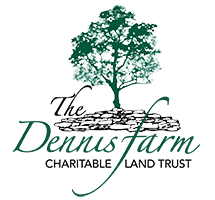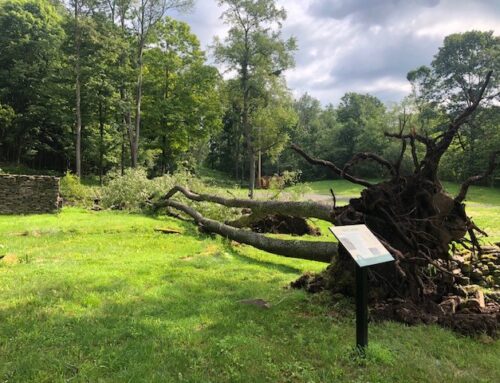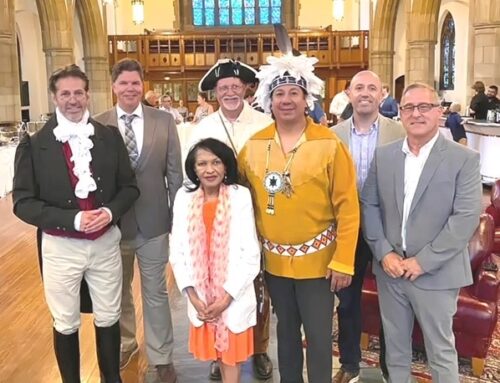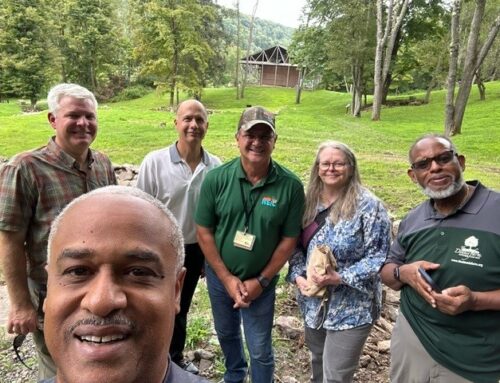Standing under entrance to the “Lexington and Concord” exhibit at the Museum of the American Revolution are Philip Mead, Director of Curatorial Affairs and Chief Historian, Denise Dennis, and Adrienne Whaley, Manager of School Programs. (photo courtesy of the Museum of the American Revolution)
On December 20, 2016, DFCLT President Denise Dennis was privileged to have a personal tour of the Museum of the American Revolution in Philadelphia, at the invitation of Zee Ann Mason, Chief Operating Officer of the museum. Ms. Mason was a guest at DFCLT’s symposium in 2015. Even though boxes of artifacts were still being opened and not all the exhibits were in place, the Museum of the American Revolution is a feast for the eyes and spirit. Located steps from Independence Hall with a façade covered in the same brick as that hallowed hall, the museum is scheduled to open on April 19, 2017, the 242 anniversary of the day the American colonists in Massachusetts resisted the British and overcame the King’s soldiers on the Old North Bridge in Concord, MA.
A member of the Dennis family, a boy named Abel Benson, was one of the relay riders who helped spread the word to the colonists in Middlesex County, MA on April 19, 1775. Abel Benson’s first cousin, Hannah Benson Dennis, was born and married in Concord, MA and is the mother of Henry Dennis from whom the Dennis Farm takes its name.
The museum tells the story of countless “ordinary” people who participated in the American Revolution, men, women, and children from British, European and African backgrounds from myriad professions and occupations. There is no doubt that everyone who visits the museum will feel the immediacy of the Revolutionary era and that the events that led to the War for Independence will come alive for them. The exhibition spaces are welcoming and embracing, the murals are beautiful; and the replicas of the Liberty Tree, privateer ship, and the base of the statue of George III transport one back in time so that each visitor will feel enveloped and carried along by the stirring events of the era.
This museum does not re-tell the familiar stories of the Founding Fathers. Rather, the interactive exhibits depict a more comprehensive interpretation of the Revolution. The stories of everyday people who fought for freedom have the effect of making a visitor feel “connected” to the American Revolution. Each visitor will be able to imagine him- or herself on the farms or in the cities, towns and villages of the thirteen colonies at the time of the War for Independence and wonder at the upheaval in their lives. The museum will make each visitor reflect on what they would have done in 1776-1783, and to reconsider what the United States stands for and what it means to be an American.
For the last 242 years, the United States has represented freedom and opportunity to people throughout the world. The museum vividly recreates the story of how this land of freedom and opportunity came into being and of the many people, from all walks of life who accomplished it, even those who fought on the British side.
The Museum of the American Revolution is precisely what our nation (and the world) needs at the moment in time because it reaffirms and inspires the best in us.





